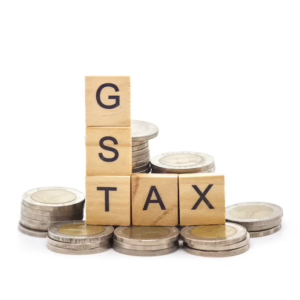Difference Between GST and TDS: Meaning & Purpose
- 17 Oct 25
- 9 mins
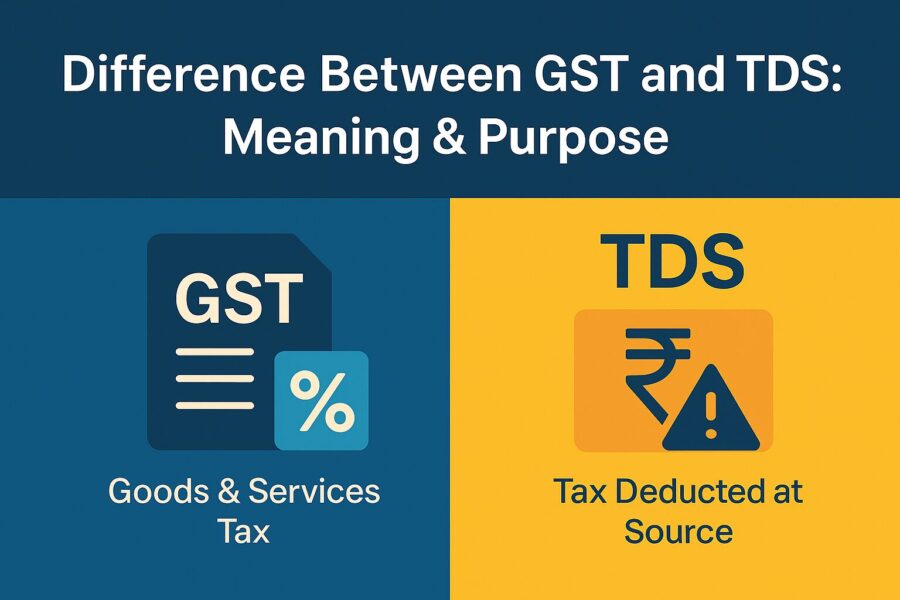
Difference Between GST and TDS: Meaning & Purpose
Key Takeaways
- TDS is a direct tax deducted from an individual’s income, while GST is an indirect tax levied on goods and services.
- TDS ensures direct tax compliance, whereas GST streamlines indirect tax collection across India’s supply chain.
- TDS applies to income-based transactions like salaries, rent, or interest, while GST applies to business transactions for goods and services.
- TDS returns are filed quarterly using Forms 24Q, 26Q, and 27Q, while GST returns are filed monthly or annually using GSTR-1, GSTR-3B, and GSTR-9.
- Both systems promote transparency and compliance, helping the government ensure smooth revenue collection and reduced tax evasion.
TDS and GST are both ways of paying taxes to the government. However, their purpose and processing are quite different. TDS is a tax collection made out of your income, whereas GST is a tax collection for the taxable supplies of your goods or services.
Both systems play a crucial role in the collection of taxes by the Indian government, ensuring compliance across different income and business activities.
This was just the introduction. However, there is a lot more to know about GST and TDS and their differences, which is crucial for taxpayers to ensure business compliance, direct tax compliance, and avoid penalties. Moving forward in this blog, we are going to scrutinise the difference between GST and TDS and understand them individually.
What Do You Mean By TDS?
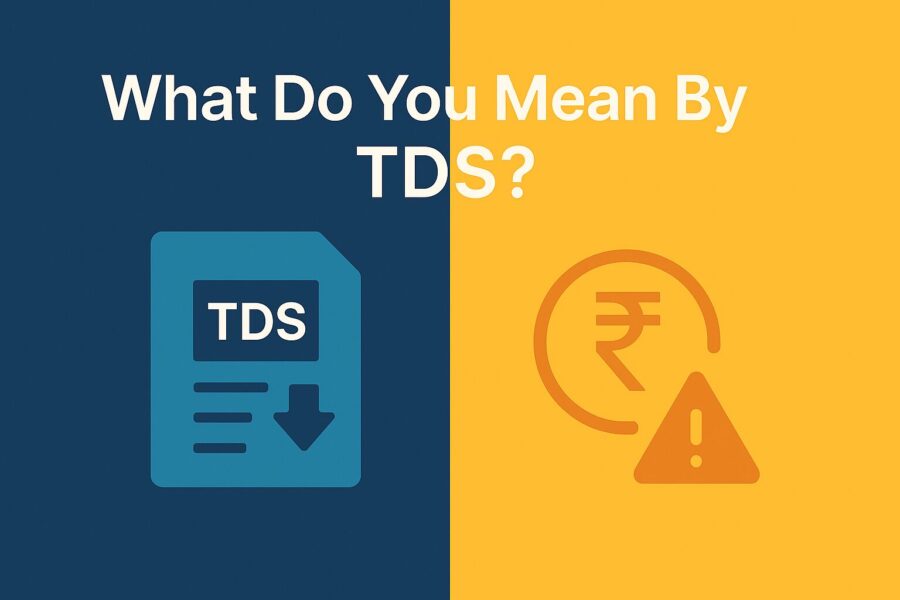
TDS means Tax Deducted at Source. It means the government takes a part of your income as and when you earn directly from your source of payment. The source that deducts that tax from people is responsible for sending the collected tax amount to the government.
This system is widely used by government departments, public sector undertakings, and private entities alike.
This is a simpler way to collect taxes as the government only has to engage with one entity to collect multiple people’s taxes at once. The most common places where people pay TDS are while receiving their salary, while getting interest on investments, when paying professional fees and while receiving rent.
What is The Purpose of TDS?
The main reason for the Indian government to introduce TDS is to simplify the process of income tax collection. TDS highly reduces tax evasion as the taxpayer’s tax is deducted even before they receive their salary.
The taxpayers also benefit from the introduction of TDS, as they do not have to create a budget from their salary to pay taxes. It ensures timely filing and compliance by deducting the tax at the time of payment for various types of payments, such as vendor payments and contract services.
What Are The Various Types of Return Filing in TDS?
The employers or the organisation that collects your taxes, file a TDS return once in every 3 months, i.e., quarterly. These entities must provide details of every deduction and deposit for the applicable period.
Filing requirements are mandated by the Indian government and must be followed by every deductor.
Different forms of TDS payment are based on various payment types. Here is a brief description of them:
- Form 24Q: This form is for the TDS payment by way of salaries.
- Form 27Q: The employers in the organisation fill out this form to pay TDS collected from non-residents.
- Form 26Q: This TDS form is for the collection of TDS payments for income coming from Rent, fees and commission.
What Do You Mean By GST?
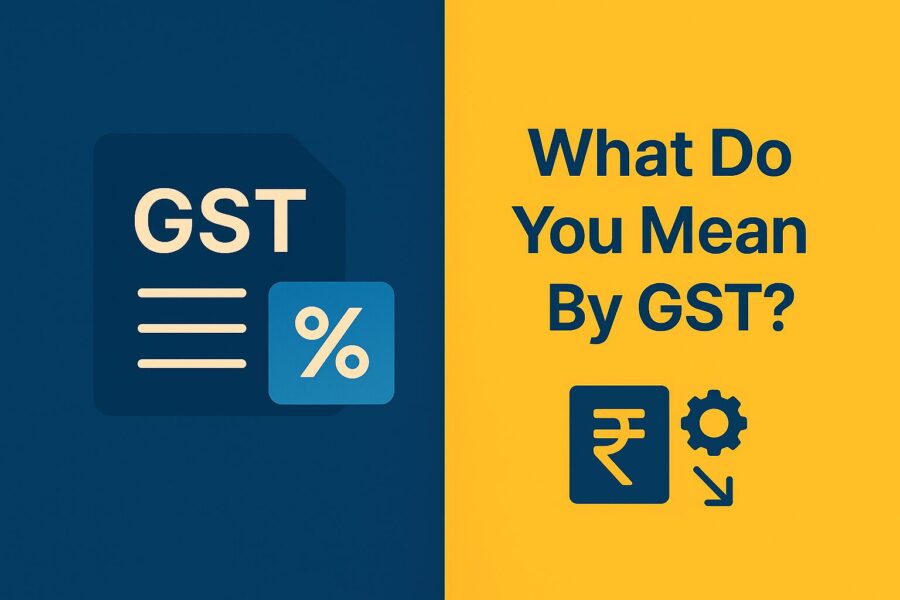
GST or the Goods and Services Tax came into effect in India on 1st July 2017. It is a type of indirect tax that replaced many other indirect taxes that prevailed in the previous tax regime. Some of these indirect taxes include VAT, Goods Tax, Service Tax, and others.
Consumers pay GST to the business when they buy its products, and the business later remits it back to the government while filing a return. The time of sale plays an important role in determining the GST liability, especially for interstate supply transactions and E-Commerce Operators.
This change in the tax system has made it much easier for people to calculate their tax liability and simplified the process of recording and accounting for spending on various types of taxes. GST liabilities and Input Tax Credits are recorded through an electronic ledger system under the GST portal.
What is The Purpose of GST?
GST offers a common indirect tax structure in the transport of goods and services for people all over India. It helps to establish a simplified yet effective supply chain in India. Since it is easy and simple to file, even small businesses can understand and collect GST from their customers without the assistance of a professional.
Entities such as an E-Commerce Operator or a government entity involved in interstate supply of goods are also liable for GST Registration.
The introduction of this taxation system has helped a lot of people to comply with their tax obligations. However, the system remains the same, but its rates on various goods and services are different and keep changing from period to period, depending on the prescribed rate by the Indian government.
What Are The Various Types of Return Filing in GST?
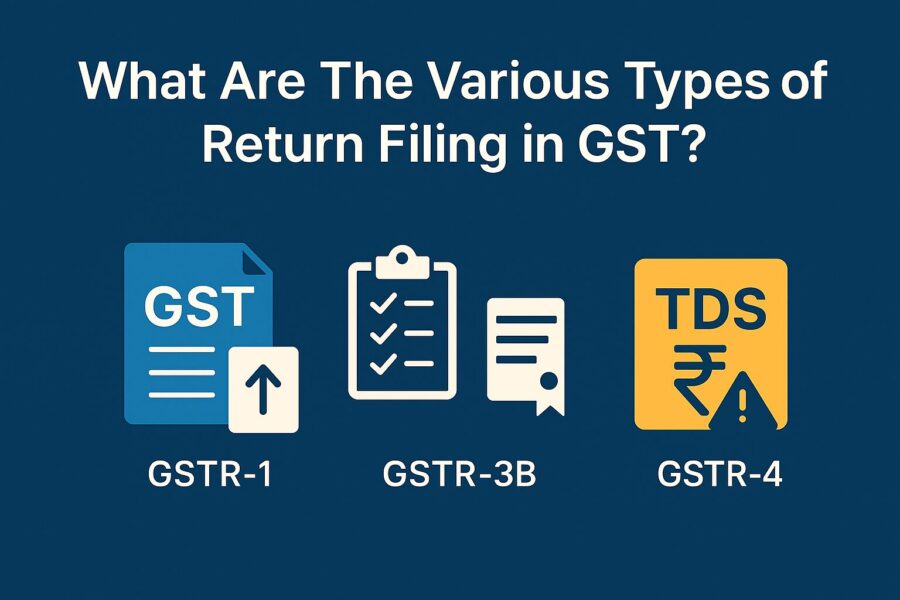
There are many GST return filings that taxpayers do for various purposes. One has to file GST returns monthly or quarterly, based on the taxpayer’s turnover and eligibility.
- GSTR-1: Taxpayers make this type of return filing to report their sales or to make a report of outward supplies they made.
- GSTR-3B: This type of return filing in India is done by taxpayers to file a summary of returns of sales, purchases and the amount of tax payable.
- GSTR-9: Taxpayers file this annual return by issuing a consolidated summary of the year’s overall GST transactions.
Filing of Returns on time ensures smooth compliance and prevents penalties. Businesses must ensure timely filing under both TDS and GST regimes.
Most Important Differences Between GST and TDS.
Both GST and TDS are types of taxes that taxpayers or the people of India pay. However, there are some differences between GST and TDS that you should know. This will help you understand your liabilities and obligations. Here are some key differences:
| Feature | TDS | GST |
| Type of Tax | It is a direct tax that people pay as a part of their income to the Government of India. | This is a type of indirect tax that businesses pay to the government for the transport of goods and services inside or outside India. |
| Who pays the Tax? | This type of direct tax is applicable to basic people and taxpayers who earn by way of salaries, rent and interest. | GST is applicable to GST-registered people whose business involves the supply of Goods and Services. |
| Filing Forms | Taxpayers file Forms 24Q, 26Q and 27Q, etc, under TDS. | GST-registered individuals file forms GSTR-1, GSTR-9 and GSTR-3B and many other forms for various purposes under the GST regime. |
| Purpose | Under TDS, the government collects tax at the source of payment itself to boost compliance. | GST is a replacement for multiple indirect taxes from the previous regime, making it simpler to understand and comply with. |
Conclusion
Both TDS and GST are important taxation systems in India. The TDS system helps in collecting direct taxes, while the GST system deals with indirect taxes. Taxpayers need to understand the difference between GST and TDS to understand who they are paying and why.
Understanding the filing requirements and ensuring timely filing for both systems is essential for staying compliant. Whether it is for vendor payments, interstate supply, or dealing with government departments, knowing your responsibilities helps in avoiding legal and financial penalties.
However, in both cases, the tax falls on the people of India, and these people need to comply with their taxation laws and not make late filings.
💡If you want to streamline your payment and make GST payments via credit, debit card or UPI, consider using the PICE App. Explore the PICE App today and take your business to new heights.
 By
By 







